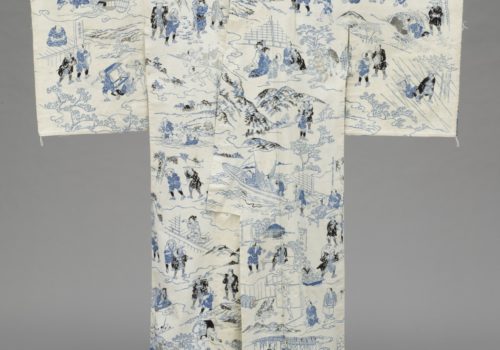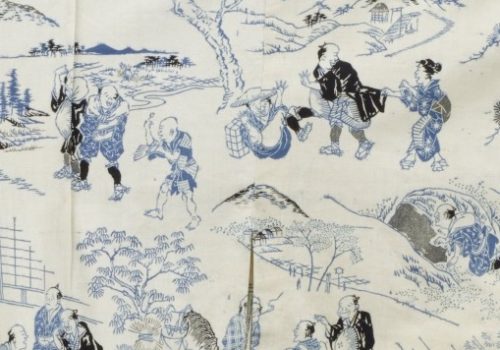Katazome

Summary
Katazome (型染め) is a Japanese method of dyeing fabrics using a resist paste applied through a stencil. With this kind of resist dyeing, a rice flour mixture is applied using a brush or a tool such as a palette knife. Pigment is added by hand-painting, immersion or both. Where the paste mixture covers and permeates the cloth, dye applied later will not penetrate.
Katazome on thin fabrics shows a pattern through to the back; on thicker or more tightly woven fabrics, the reverse side is a solid color, usually indigo blue for cotton fabrics. Futon covers made from multiple panels of fabric, if the stencils are properly placed and the panels joined carefully, exhibit a pleasing over-all pattern in addition to the elements cut into the stencil.
One attraction of katazome was that it provided an inexpensive way for over-all patterns similar to expensive woven brocades to be achieved on cotton. As with many everyday crafts of Japan it developed into a respected art form of its own.
Besides cotton, katazome has been used to decorate linen, silk and fabrics that are all or partially synthetic.
What does Katazome look like?
Discover Katazome crafts from The Craft Atlas and other digital collections in the image gallery.
Where does Katazome come from?
Japan




2 thoughts on “Katazome”
Comments are closed.